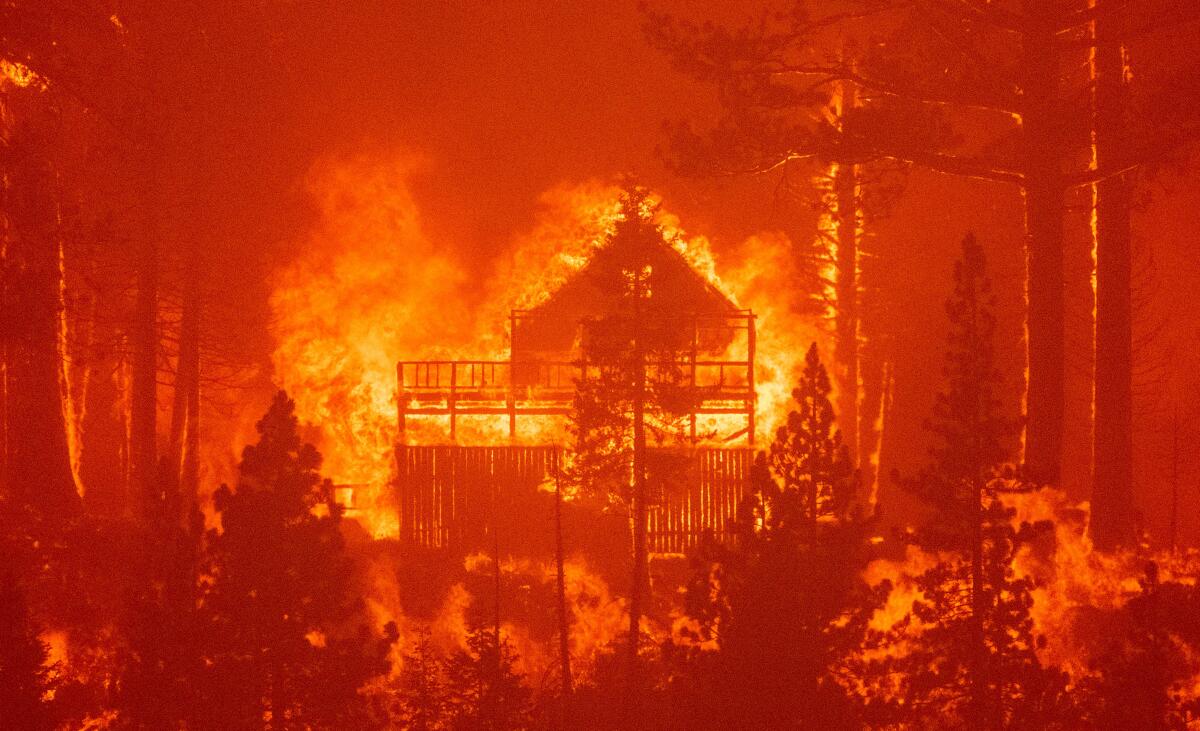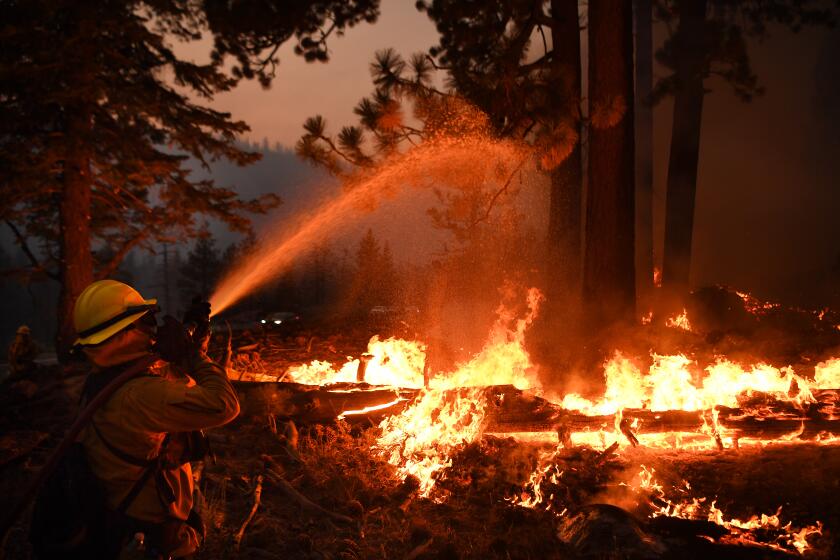‘Unprecedented’ Caldor, Dixie fires are the first to burn from one side of the Sierra to the other

- Share via
Faced with drought conditions and rising temperatures from climate change, California has hit many grim fire milestones in the last few years.
In 2020, California saw the most destructive fire season on record. But 2021 is shaping up to be another one for the record books, with the conditions producing fire behavior never seen before.
Thousands rushed to leave South Lake Tahoe as the resort city came under an evacuation order due to the Caldor fire.
The Dixie fire is now the second-largest in state history and still burning out of control.
The 190,000-acre Caldor fire is much smaller but now threatens more than 33,000 homes in the Lake Tahoe Basin, an area many residents believed was fairly well protected from fires.
Two fires make history
Chief Thom Porter, of the California Department of Forestry and Fire Protection, said that before this year, no fire was known to have burned from one side of the Sierra to the other.
The Caldor and Dixie fires have now achieved that feat.
“Two times in our history and they’re both happening this month,” Porter said. “So we need to be really cognizant that there is fire activity happening in California that we have never seen before.”
The Caldor fire has also changed the view of fire risk in Lake Tahoe.
“Historically, we’ve used terms such as ‘anomaly,’ ‘unprecedented’ or ‘extreme’ to describe the wildfires that we have seen burn throughout the state over the past 10 to 20 years,” Cal Fire spokesman Chris Anthony said Monday evening. “These terms are no longer appropriate given the clear trends associated with drought, changing climate and un-resilient forest stands. Unfortunately, these factors contribute to the resistance to control that we are seeing with the Caldor fire.”
A rock fortress
A granite ridge that overlooks the Tahoe basin was always seen as protection against a fire sweeping into the region. Officials say it could have some mitigating effects on the fire, officials said.
Unlike lower elevations populated by hot-burning manzanita brush, ponderosa pine and cedar trees, the ridge is characterized by fir trees and more spare, open areas that can help slow the fire’s spread.
But with powerful winds Monday, embers were flowing and that set brush on fire closer to the basin.
“They have long looked to that granite wall as what’s going to keep fire out,” said Crystal Kolden, a fire scientist at UC Merced. “But this is a new world with climate change, and that basically is no longer a viable last line of defense.”
Worst-case scenario
So far, the Caldor fire has primarily fed on vegetation, Kolden said; but if the fire makes it into nearby communities, that will rapidly change. Homes and other structures would not only provide additional fuel for the fire, but also release dangerous chemicals into the air, along with “tremendous embers.”
“It’s an Alpine community with log cabins, and a lot of those structures were built in the ’40s, ’50s, and ’60s,” she said. “So you’ve got this potential for it to really start jumping from building to building to building, and it’s just a completely different beast and they can’t fight it.”
Wildland fires can typically burn up to about 1,500 degrees, Kolden said, while structure fires can burn closer to 3,600 degrees.
“It’s so dangerous, it’s so toxic, and there’s so much heat,” she said.
More to Read
Sign up for Essential California
The most important California stories and recommendations in your inbox every morning.
You may occasionally receive promotional content from the Los Angeles Times.













